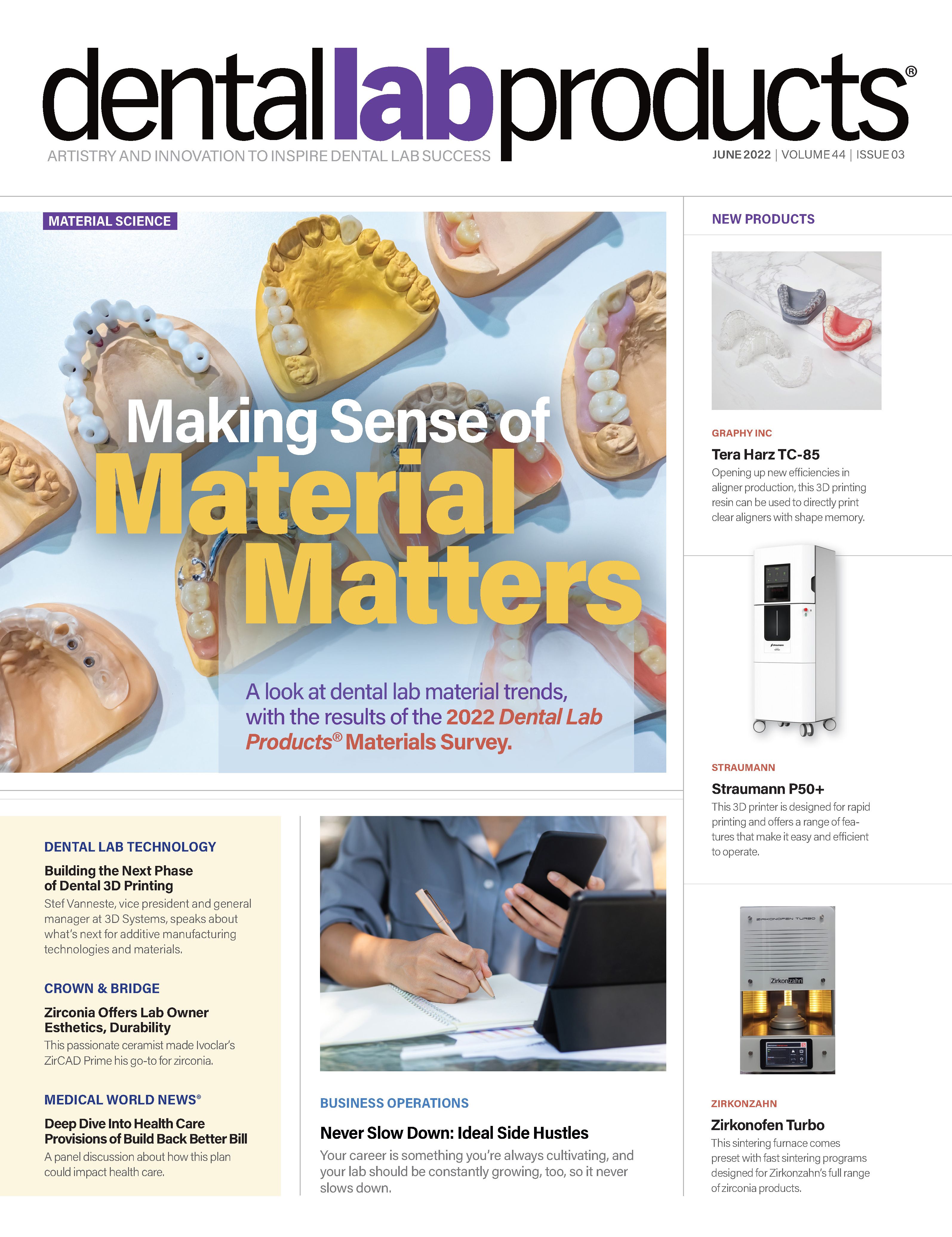How Dental Materials Get Used By Other Industries
A look at how some commonly used dental materials are put to work in other businesses.

Dentistry is truly a materials industry. The industry is always looking for new material options that can provide the ideal combination of strength, shade, translucency, and durability to stand in for a natural tooth. This often comes down to a balance between strength and esthetics, even as the latest materials are closer than ever to replicating the physical properties of a tooth.
However, dentistry is not a huge industry by itself, and therefore many of the materials used in dental practices and labs were not developed specifically for dental use. In most cases, these raw materials are widely used in other industries—often in wildly different ways—to produce very different types of products. Here’s a look at how everyday dental materials are used in other industries.
Zirconia:
As the dominant choice for indirect fixed restorations, zirconia is a great material for dental purposes because of its relatively low cost, high strength, ideal biocompatibility, and esthetic potential. But the material is also a key resource for a range of other industries. Because of its strength, temperature stability, and resistance to corrosion, the material is used for making refractory products, electronics, fuel cells, paints and tints, and it is used in engines for both cars and planes. Another common use of zirconia is in jewelry, which takes advantage of the material’s diamondlike appearance when it’s in its cubic formulation.
Glass ceramics:
As a popular option for indirect dental restorations, glass ceramics, such as lithium disilicate and lithium silicate, are another material that offers a combination of strength and esthetics for the use of replacing natural teeth. Although the lithium used in these materials is also a key component of batteries, glass ceramics require lithium in a fine-grain size. Other industries using these glass ceramics include all types of glass, including fiberglass and high-temperature cooking dishes, as well as a range of ceramics and coatings for ceramic cooking dishes. Another use for these materials is manufacturing induction cooktops.
Polymethyl methacrylate (PMMA):
Commonly used for temporary restorations, among other things, PMMA materials also have a wide range of uses in other industries. The material can be formulated as a transparent glass substitute under brand names, such as PLEXIGLASS and Lucite, and used to make fish tanks, protective barriers, and other nonglass windows. Additionally, the material is used to make glasses lenses, contact lenses, and intraocular lenses. It can also be used to make furniture, acrylic paints, toys, and much more.
Bisphenol A-glycidyl methacrylate (Bis-GMA):
As 1 of the 2 main components of most dental composite resins, this material is most often used in the dental industry because of its ability to be polymerized to fit and adhere to almost any shape. Still, Bis-GMA is used elsewhere, including as an ingredient in paints and in several industrial processes.
Silica:
The other main component of many direct dental restorative materials, silica is a naturally occurring silicon oxide that is often found in quartz. In dentistry, it is often a filler in resin materials. As a key ingredient in glass and cement, silica is most commonly used in construction. The material is also used in the production of some cosmetics because of its light-diffusing properties. In food production, silica can be added as an anticaking agent, and the material is also a key component in the creation of semiconductors.
